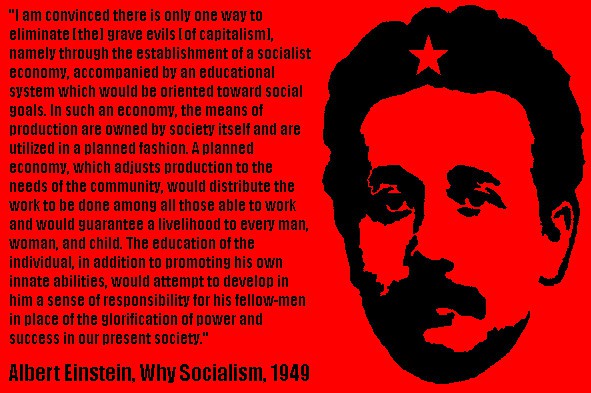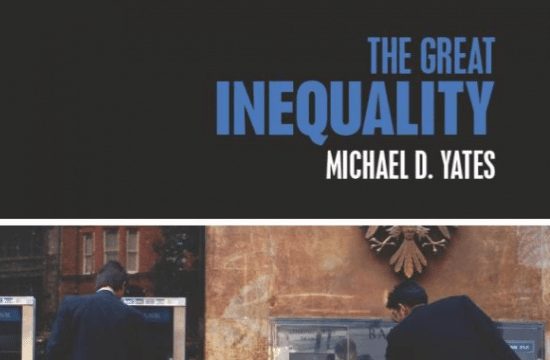Every night on CNN, Lou Dobbs bashes immigrants. No matter what the subject, he manages to turn it into a horror story about the evils of people he calls “illegal aliens.” They steal; they cheat; they use drugs; they murder innocent people; they transmit diseases; they have filthy habits; they take jobs from decent hardworking American; they cost the taxpayers billions of dollars each year; they get perks ordinary citizens can only dream of, such as free healthcare and college tuition. Dobbs’ attacks are mirrored day and night on radio talk shows, in newspaper editorials and guest columns, and in the halls of Congress and every state capitol.
What these hatemongers say resonates with many of my fellow citizens. I have heard them say so. But especially in these hard economic times, when scapegoating of one group or another might become virulent and lead to vicious and divisive actions and politics, it might be a good idea to get a handle on some facts.
The first thing we need to understand is that immigrants come to the United States not out of choice but because changed circumstances, brought about often enough by business-supported political actions taken here in the United States, have forced them to do so.
Consider the story of a typical immigrant, a composite of millions of others who could tell the same tale. Let us call her Elena. Elena worked in a garment factory in a free trade zone in El Salvador. The factory is a subcontractor for a large clothing chain in the United States. The free trade zone itself is the product of an agreement made between the government of El Salvador and the International Monetary Fund. The government is right-wing, dominated by the rich rural families that have run the country for many decades. It has been waging a war against left-wing insurgents, aided by money and military advisors from the United States, which, in support of U.S. coffee companies and other businesses with interests in El Salvador, has been deeply embedded in Salvadoran affairs . The government’s budget is strained because of the war and because the rich are too powerful to be taxed and the poor have no money. In the countryside adults must subsist on about 1,200 calories per day. To pay its bills, the government goes to the IMF for a loan. The IMF, itself dominated by the United States, grants the loan but imposes strict conditions on the Salvadoran budget. One of these is that exports must be stimulated by offering foreign firms tax incentives. So the government establishes a free trade zone, a space in the capital city of San Salvador where businesses can set up shop in publically-financed buildings and operate tax-free. There is plenty of labor available, mostly women who have migrated to the city to escape the civil war in the countryside.
Elena gets a job in the garment factory. She is so desperate for work, with young children to support and no husband (he was killed in the fighting), that she ignores the long hours and horrendous working conditions. Wages are pitifully low but they keep her family fed. A year passes and Elena makes friends among her coworkers, all of whom have their own tales of woe. As the women become habituated to industrial labor and as they talk among themselves, they begin to think about things: about how hard it will be to work at such a rapid pace as they get older; about how the bosses abuse them physically and sometimes sexually; about how the clothes they make sell for a lot of money in the United States, enriching the owners on the backs of their starvation wages. One of the women is from a village once controlled by the rebels and has attended a peoples’ school, where she learned something of her country’s sordidly violent and oppressive history and of the global forces that have made it impossible for her and her family to ever improve their lot in life. She tells them that only when the ordinary people have gotten together and fought for a better life did things ever change. The archbishop of the city ash been saying the same things and demanded that the government do something to alleviate the misery of the masses. As this woman speaks, Elena and the others feel something stirring inside themselves. If they banded together, perhaps they could win better pay, hours, and conditions. Maybe they could get the employer to provide daycare facilities so that they could bring their children with them each day.
The women contact a union organizer and they begin to try to get their coworkers to join. The organizer knows activists in the United States who will support and publicize what the women are doing. All goes well for awhile, but soon the boss begins a systematic campaign of torment of union supporters. The woman from the rebel village receives phone calls threatening death to her and her young daughters. When the workers and supporters put up a picket line to protest their treatment, police and paramilitary thugs descend on them with clubs and tear gas. A week later, Elena is fired. She begins to work out of the union headquarters to keep the union going, but she notices strangers following her home, and her phone starts ringing in the middle of the night. When she picks up the receiver, she hears screams that sound like someone being tortured. The day after the archbishop is murdered, she decides that she must leave the country with her kids. Through a friend, she contacts a man who, for a fee, transports refugees into Mexico or the United States. Elena uses her entire savings and begins a long, difficult, and dangerous journey to El Norte, ending up in northern Virginia, with a letter to show to a priest. Through him, she finds a place to live until she geta a job. She meets many other refugees, some for El Salvador, and they take comfort from one another. And they begin again to build a community. She gets work at a hotel as a room attendant, using an identification card she gets from a friend. Her kids start school, and they help her with her English.
Why would anyone consider Elena to be an evil person. How is she responsible for her fate? What would you have done if you were her? Aren’t the actions of the United States, its government and its corporations, root causes of what has happened to her?
The second fact we need to grasp is that, more so than perhaps any other country, employers in the United States have relied upon, and indeed actively encouraged, periodic waves of immigration to provide them with easily exploited pools of cheap labor. For the past three decades, millions of immigrants, primarily from Mexico, Latin America, and East Asia, have come to this country seeking work, in what Kim Moody, in his book U.S. Labor in Trouble and Transition calls our third historical influx of immigrants. While some of the new arrivals are highly educated, with technical skills that give them access to special visas, most are poor men (men typically come first and their families follow) displaced by both political upheavals aided and abetted by U.S. foreign policy and the deregulated international trade and capital flows that have made it impossible for them to make a living as peasant farmers. In 2007, the Bureau of Labor Statistics estimated 15.7 percent of the U.S. labor force—about twenty-four million people—to be foreign-born. Not all of these workers have proper immigration documents, although we do not know precisely how many. There are probably, at least, twelve million undocumented persons in the United States today, but not all of these are in the labor force. The Pew Hispanic Center estimates that undocumented workers make up about 5 percent of the labor force, so if this is true, there are about 7.6 million undocumented workers here or a little less than one-third of all foreign-born workers. The number of immigrant laborers, both with and without documents, has risen dramatically (though unevenly), especially since the early 1990s. In 1970, foreign-born workers comprised only 5.2 percent of the labor force; in 1990, the figure was 8.8 percent.
By far, the largest group of recent arrivals has come from Mexico. In 2005, a little under one-third of all immigrant workers were from Mexico. Given that most of these have limited formal education and given the near impossibility of poorly educated and unskilled persons entering the United States legally, there is no doubt that a significant proportion of Mexican workers are here without documents. Other countries that have sent significant numbers of immigrants are the Philippines, India, China, Dominican Republic, Vietnam, and El Salvador.
Part of this essay is taken from the second edition of my book, Why Unions Matter, just published by Monthly Review Press. You can order a copy at http://www.monthlyreview.org/books/whyunionsmatter.php









Keep up the good work!
Michael,
You write a challenging article. I appreciate your clarity. It’s also great the you used a small “c.” It’s interesting to have come through so many years of continued and, I think principled, class conscious participation in the labor movement, without ever owning up to, or denying being a capital “C” Communist. The label hasn’t kept the members from electing me, year after year, to represent them in Labor Councils, to Executive Board, conventions and as Vice President of the most – or one of the most progressive unions in the South Bay Area.
I don’t know what happened to David McLure. Do you? The last I knew was that he talked about meeting with some old-fashioned, nasty violence in return for effective outspokeness in the Plumbers’ Union in San Francisco. At about that time he made the rounds of union meetings in the Bay Area promoting the boycott of J.P. Stevens. That was the same organizing campaign, I think, that brought Bruce Raynor into prominence and underlay the film “Norma Rae.”
Interesting that Raynor is now in the middle of what seems to be an SEIU effort to cut up UNITE/HERE and make some or all of it part of the Andy Stern
empire.
The book you may be waiting for with a well documented history and a non- Chavez worshipping perspective is well on the way. Look for an encyclopedic volume by Frank Bardacke.
Get in touch please.
In Solidarity,
Fred <fredhirsch@cruzio.com.
P.S. You were kind enough to mention that AFL-CIA connection.
Just today Amy Goodman devoted her program to the cancerous destruction wreaked by the W.R. Grace Co. in Libby, Montana. You might be interested in the following email I sent her:Hello Folks at Democracy Now,
What I”m about to write down is off the top of my head. I don’t have the backup documents in hand, but I’m sure there is enough information to follow up the story. Either I could find it or you might.
I was on your show in July of 2005 with Kim Scipes. We were talking about the “Unity and Trust” resolution which was submitted to the AFL-CIO Convention in Chicago. The Resolution was submitted to the AFL-CIO by the unanimous vote of the California Labor Federation. The main body of the resolution came out of my Local Union, Plumbers and Fitters Local 393 in San Jose, California and out of the South Bay AFL-CIO Labor Council (SBLC). The SBLC was once referred to by then AFL-CIO President as the “labor council with its own foreign policy.”
The “Unity and Trust” resolution called upon the AFL- CIO to open its books on the history of the American Institute for Free Labor Development (AIFLD). its other “Labor Institutes,” and American Center for International Labor Solidarity (ACILS), which continues to be the Federation’s arm for overseas activity in at least 27 countries. It also called upon the Federation to cut off its funding relationship with the government for its international activities. About 95% of the funds for ACILS (also called the Solidarity Center) comes from the federal government, largely through the National Endowment for Democracy (NED), which was set up during the Reagan administration. NED, according to one of its founders, was established to overtly accomplish the work that the CIA had previously done covertly.
During the 2005 AFL-CIO Convention, the Resolutions Committee substituted its own resolution (quite obviously prepared by its ACILS people) for the Unity and Trust Resolution. When it came to the floor Gerald McEntee of AFSCME, who chaired that session, permitted two speakers in favor of the resolution recommended by the Resolutions Committee and said “Did I hear someone call for the question?” A delegate complied with a word and a hand up and McEntee shut down debate while three delegates were lined up to speak on the issue.
The “Unity and Trust” resolution briefly referred to the groundwork done by AIFLD leading to the the overthrow of the government of Salvador Allende in Chile, and to behind the scenes work of the current Solidarity Center preceding the 2002 coup against the government of Hugo chavez in Venezuela.
I give you this detail only to show that there has been a continuum of government financed activity abroad that has operated to sabotage organized labor movements abroad which might challenge U.S and corporate foreign policy and to promote the equivalent of company unionism which meet the foreign policy robjectives of the the U.S. Government and Corporate America.
AIFLD was set up in 1962 with an Executive Board that included a number of U.S. union notables, a few of the same from Latin America (As I remember,even then it included labor representatives from both Chile and Venezuela.) and some of the most high-powered U.S. Corporate executives. I believe George Meany was the first president of AIFLD, followed by Lane Kirkland. The organizational “mastermind” of AIFLD was Serafino Romualdi, who had previously been an OSS operative in Italy and subsequently worked for Rockefeller in Latin America. One of the people responsible for bringing together AIFLD’s collaborative Executive Board team, was Arthur Goldberg who had headed up the Labor Desk of the OSS and later designed the legal aspects of the merger of the AFL and CIO (The merger established the AFL-CIO. Among many other things, it enabled the two organizations, which previously had disparate connections and policies abroad, to work together in unified foreign operations, on the government payroll and in collaboration with the CIA.) The first Director of AIFLD was William C. Doherty, who was authoritatively identified as a CIA agent by Philip Agee. (Doherty’s father, from a postal union, had served as Ambassador to Jamaica.)
The corporations involved in promoting AIFLD were undoubtedly interested in having good labor relations abroad with unions that wouldn’t give them any trouble and which would not support any governments that might threaten expropriation of their ill-gotten commercial gains. As ever, the government served the needs of the corporate elite that ruled the roost and was quite interested in obtaining the services of blue collar, rather than striped pants diplomats. What a convenient way, with the decline of colonialism, to open doors for an expanding , neoliberal empire.
That’s where J. Peter Grace, CEO of W.R.Grace Co., fits in. He became the Treasurer of AIFLD and served as such for nineteen years, during the very same years that the company was killing the working families of Libby, Montana, producing a product that spread the poison of vermiculite throughout the U.S. and undoubtedly transnationally – wherever Grace Corp. could make a buck.
I believe W.R. Grace was once connected to the Grace Line, a major shipping company that opened up trade to Latin America. The company’s main line of trade and development came to be chemicals. The company probably had been involved with its German subsidiary in the 1930s-40s producing the chemicals that were so useful to the Nazis during the Holocaust.
J. Peter Grace had a close relationship with Otto Ossman (I hope that is the name. It’s been a while.) who was very important person in Grace Co.’s operations in Germany. J. Peter wanted to bring Ossman here to work for him in the U.S. Ossman had some trouble getting a visa and J. Peter wrote a friendly letter of recommendation and praise to whoever was heading up the Immigration and Naturalization Service (now ICE) in about 1981.
The letter must have come to the attention of some good investigative reporter. J. Peter was not only CEO of his company and Treasurer of AIFLD, he was selected by Ronald Reagan to head up an investigation into cutting the costs of the government. It was the first major effort to fit the government into a bathtub so it could be drowned. J. Peter made a nationwide tour, holding hearings and grabbing headlines about wasteful government spending.
It was about then that the letter recommending Otto Osman for entrance into the U.S. Became an issue. I remember seeing a snippet on “Twenty-Twenty” or “Sixty Minutes” (perhaps just a news program) with a reporter asking J. Peter Grace about his Otto Ossman connection. J. Peter brushed aside the microphone and tried to duck the camera, refusing to answer the question. It seems that in obtaining entry to the U.S., J. Peter was Ossman’s only saving grace. Ossman’s visa problems stemmed from the fact that he had been convicted of “slavery and mass murder” in connection with his executive and technical work having to do with death camps, Dachau I believe.
Not long after that J. Peter Grace was discontinued as Treasurer of AIFLD and was no longer affiliated with the corrupt government financed dealings of the AFL-CIO abroad. It is a history the labor movement must learn in order to develop a future of genuine worker- to-worker solidarity among labor movements across the planet.
Perhaps with your exposure of the murderous W.R. Grace profiteering with vermiculite our understanding of the poisonous nature of collaborating with exploiters and profiteers will be enlarged.
Thank you for your work. I try to listen every day and today was outstanding!
If you would like to discuss this matter further, I can be reached at 408/821-1394.
The age-old pesky U.S.-Mexico border problem has taxed the resources of both countries, led to long lists of injustices, and appears to be heading only for worse troubles in the future. Guess what? The border problem can never be solved. Why? Because the border IS the problem! It’s time for a paradigm change.
Never fear, a satisfying, comprehensive solution is within reach: the Megamerge Dissolution Solution. Simply dissolve the border along with the failed Mexican government, and megamerge the two countries under U.S. law, with mass free 2-way migration eventually equalizing the development and opportunities permanently, with justice and without racism, and without threatening U.S. sovereignty or basic principles.
To read the complete solution, Google “Megamerge Dissolution Solution”, or click url.
Well I truly liked reading it. This subject offered by you is very useful for accurate planning.